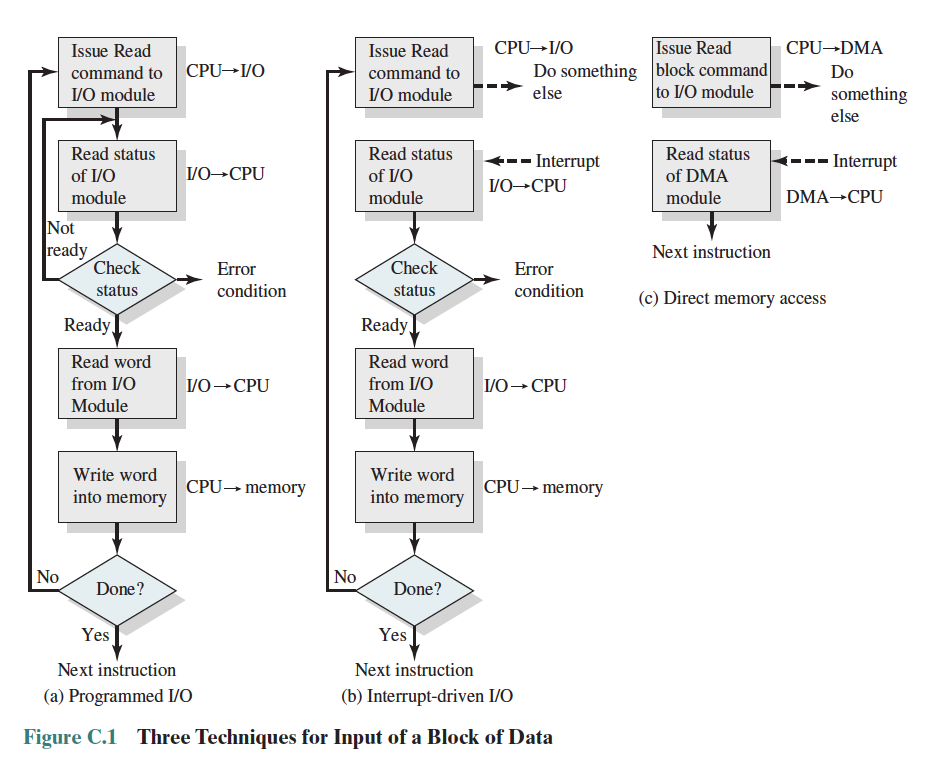Input-Output When the processor is executing a program and encounters an instruction relating to I/O, it executes that instruction by issuing a command to the appropriate I/O module.
Programmed I/O
In programmed I/O, The I/O module performs the requested action, then sets the appropriate bits in the I/O status register but takes no further action to alert the processor (no Interrupt).
- as opposed to O
In programmed I/O, after the I/O instruction is invoked, the processor must take some active role in determining when the I/O instruction is completed.
- How? The processor periodically checks the status of the I/O module until it finds that the operation is complete (i.e. Polling).
Limitation of Programmed I/O
With programmed I/O, the processor has to wait a long time for the I/O module of concern to be ready for either reception or transmission of more data. The processor, while waiting, must repeatedly interrogate the status of the I/O module. As a result, the performance level of the entire system is severely degraded.
Chester was saying that USB is polling.
